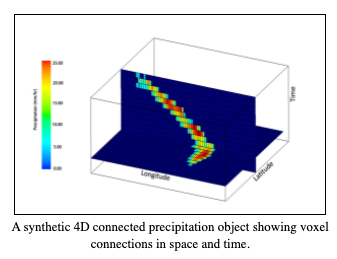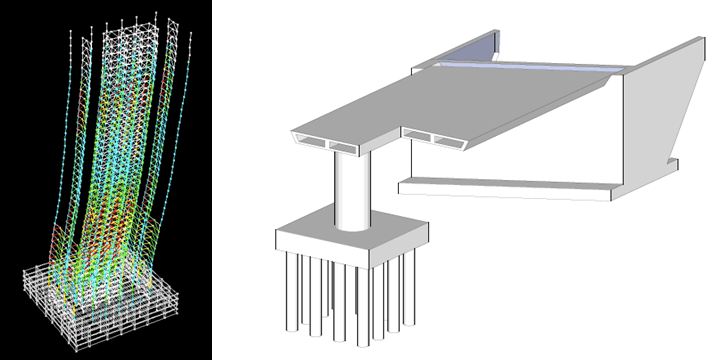Current Projects Open to MS Student Participation
CEE offers many opportunities to participate in projects aimed at some of today’s most challenging societal problems. These projects often span disciplines and explore the interplay between natural and built environments. This list includes project opportunities available for new and current MS students. If you are interested in one or more of these projects, please contact the associated PIs to learn more about available opportunities.
Municipal wastewater surveillance for PFAS
Per- and polyfluoroalkyl substances (PFAS) are persistent, bioaccumulative, and potentially toxic. Due to these concerns, PFAS are subjects of upcoming regulations at states and national levels. The goal of this project is to determine the contribution of residences to PFAS loadings in municipal wastewater.
PI: Adeyemi Adeleye
Number of positions: 2
Integrating data streams from UAV platforms to inform wildland fire risk
This project will involve collection, analysis, and interpretation of environmental data such as vegetation cover and landscape features using a combination of Drones, regular RGB imaging, thermal infrared imaging, multispectral imaging as well as airborne LiDAR platforms.The synthesized datasets will be used to develop statistical models for predicting wildfire behavior, design prescribed burns and fuel treatment activities, quantify changes from fire and other ecosystem disturbances and inform the frameworks for risk and resilience assessment for natural and built environments in general.
PI: Tirtha Banerjee
Number of positions: 2
Utilization of a Damping Element Model for Energy Dissipation Characterization in Building Structures
This project aims to calibrate velocity-dependent and amplitude-dependent damping elements using the wealth of data available from the California Strong Motion Instrumentation Program (CSMIP) instrumented buildings and conduct statistical analysis to capture the effect of ground motion intensity building height and building dimensions on these damping elements parameters.
PI: Farzin Zareian
Number of positions: 1
Application of Remote Sensing for Extreme Events Monitoring
Many advances in the theoretical understanding of atmospheric and oceanic dynamics have been based on numerical modeling. We seek additional advances by harnessing the vast amounts of remote sensing information and focusing on a data driven and computer vision approach, which looks at observational and modeled data from a 4D perspective. By viewing precipitation events as objects in space and time, we provide enhanced information regarding the evolution of the event itself, as well as its characteristics.
Number of positions: 2
Quantifying PFAS Fate and Transport in an Urban Watershed
Per- and polyfluorylalkyl substances (PFAS) are a contaminant of growing concern. We are working to understand how these compounds enter our local watershed by combining field measurements of concentrations of different PFAS with modeling of their fate and transport in surface and groundwater.
PI: Russ Detwiler
Number of positions: 2
Microstructure Quantification of Concrete and Cementitious Materials
Studies on mechanical performance of civil infrastructure materials are of great interest to structural engineers and designers. The proposed research project aims to develop novel methodologies to quantifying microstructure and its evolution of concrete (e.g., UHPC) under environmental attacks using the state-of-the-art X-ray computed tomography (CT) and machine learning technologies.
PI: Lizhi Sun
Number of positions: 2
Utilization of simulated ground motions for the performance assessment of distributed systems
The overarching goal of this research endeavor is to assess the vulnerability of distributed systems in Southern California. With this backdrop, the focus will be on the wastewater management system, water distribution system, electric power system, and interaction (i.e., four projects).
PI: Farzin Zareian
Number of positions: 4
Assess changes in Glaciers and Snow cover in Central Asia using NASA MODIS imagery
Increase in temperature due to climate change has reduced the snowfall/rainfall fraction in mountainous areas and aggravated glacier and snow melt leading to a continuation of glacier and snow cover shrinkage. We will investigate the shrinkage in the glaciers using the World Glacier Monitoring Service and the decrease in snow cover of the mountainous areas using the data obtained from the MODIS/Terra Snow.
Number of positions: 2
Using Nanotechnology for Water and Soil Treatment
Engineered nanoparticles have higher surface area to volume ratios and higher reactivities than their bulk counterparts. The goal of this project is to synthesize nanoparticles and modify their physicochemical properties to enhance their capacity for water treatment and environmental remediation.
PI: Adeyemi Adeleye
Number of positions: 2
Smart Structures Using Magnetorheological Elastomer Dampers and Isolators
Vibration-control devices in civil engineering applications (such as bridge structures) frequently utilize field-dependent elastomer bearings to support service loads, and also to change the natural frequencies of structures to mitigate response from the natural hazards such as earthquakes. The proposed project aims to conduct the finite element analysis of dynamic seismic responses of smart structures to determine the effectiveness of embedded semi-active dampers and isolators.
PI: Lizhi Sun
Number of positions: 2
Wastewater based surveillance of SARS-CoV-2
Wastewater-based surveillance (WBS) of SARS-CoV-2 represents a promising complement to clinical testing as a means of assessing COVID-19 trends and prevalence within a community. The objective of this project is to understand how the wastewater sampling design impact the quantifiable SARS-CoV-2 genome in collection and treatment system and how to relate viral signal detected in human wastewater to community level of epidemic.
PI: Sunny Jiang
Number of positions: 1
Modeling Urban Flood Hazards at Metropolitan Scales
We are developing innovative simulation models for detailed simulations of flood hazard across whole metropolitan regions including Los Angeles, Miami, and Houston. We seek to add new new features to existing models, to test the accuracy of models, and to improve understanding of the distribution of flood risks across space and human populations.
PI: Brett Sanders
Number of positions: 2
Ground motion directionality for the design and assessment of structures
This project aims to quantify the variability in the performance of structures to uncertainty in seismic excitation direction. Within this setting, the project will provide engineers with practical recommendations and approximate methods by which ground motion directionality is incorporated in design practice.
PI: Farzin Zareian
Number of positions: 2
Improving Satellite Precipitation Estimation with Deep Learning Methods
We plan to utilize advanced machine learning (ML) techniques combined with the new generation of NASA’s geostationary observations, and relevant numerical weather prediction (NWP) model information for real-time precipitation estimation over the Western U.S., especially focusing on enhancing the retrievals of warm and orographic precipitation.
Number of positions: 2
Privacy-preserving Method for Traffic Data Collection and Analysis
We propose a new privacy-preserving method for collecting and analyzing traffic data where a network is a single entity, and trips are tracked in a relative space with respect to the remaining distance to individual travelers’ destinations. Such data are sufficient for characterizing traffic dynamics but without revealing Personally Identifiable Location Information (PILI). Student researchers will help to develop smartphone apps to collect such data or convert existing GPS data to preserve PILI privacy.
PI: Wenlong Jin
Number of positions: 2
Machine Learning Urban Forms
In this project, we will be using and refining machine learning tools to classify urban forms and regenerate realistic synthetic urban textures. Development of such advanced computational tools have broad implications from improved understanding of urban flooding to traffic flow in complex urban environment. Strong coding background is required for the M.Sc. student working on this exciting multidisciplinary project.
PI: MJ Qomi and Brett Sanders
Number of positions: 1
Banner photo credit: Ian Parker















